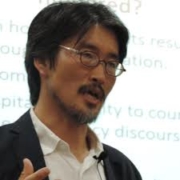PISA stands for the Programme for International Student Assessment. It is a test administered by the OECD in many countries around the world. You might have heard about the test because of the international league tables comparing systems of education that are created after the results are released. In recent years, Finland and Shanghai have come out on top, unleashing a wave study trips to those place by policymakers who want to learn the secret of good education.
Bob Lingard, a Professorial Research Fellow at the University of Queensland, has spent many years researching the rise of global education governance (see for example this article). He sees the PISA for Schools program as part of the expanding work in education by the OECD. He spoke with me in mid-January about his recent article and recounts the historical evolution of the OECD’s work in education. He ultimately questions the comparative value of the PISA for Schools program.
Citation: Lingard, Bob interview with Will Brehm, FreshEd, 15, podcast audio, February 15, 2016. https://freshedpodcast.com/boblingard/
Will Brehm 1:37
Bob Lingard, welcome to FreshEd.
Bob Lingard 1:40
Thanks, Will. It’s great to be here.
Will Brehm 1:42
You have recently been publishing quite a lot with a few colleagues on the OECD and PISA and putting it all within this idea of global education governance, which you’ve been working on for quite a few years now. You have a new piece coming out in the Comparative Education Review in the February 2016 edition about PISA for schools, which is a new manifestation or new tool or service that the OECD is providing. Before we jump into that topic, could you provide a short history of what the OECD does in education?
Bob Lingard 2:26
Yes, certainly, Will. Well, firstly, the OECD -the acronym stands for the Organisation for Economic Cooperation and Development. It’s an organization consisting of, today, 34 member-countries. The rich countries of the world. Its headquarters are in Paris, France. It was created in 1961. So, in 2011 it was 50 years old. It was created out of the US Marshall Plan to reconstruct Europe in the post-war period, and then in 1961, became a largely economically focused organization. Today, there are three criteria for membership: commitment to market economy, commitment to liberal democracy, and a more recent addition to a membership requirement is a commitment to human rights. Now, it was said when the OECD was created in 1961, that it was a sort of economic NATO. This was the context of the Cold War, and the USA in particular, which provides about half of the overall funding of the part one budget of the organization. It saw the OECD and its commitment to liberal market economics -to capitalism if you like- as a bulwark against Soviet communism, and encroachment into Europe and other parts of the world. So, it’s largely the OECD, an economic organization. And education as such only really had an inferred role at the OECD. The first separate Directorate for Education was not created until 2002. And that was reconstituted in 2012 and it is now called the Directorate for Education and Skills and is now more centrally important in the work of the OECD. Indeed, the OECD’s 2012 Skills Strategy is the document that tries to cohere OECD policy work and research across their multiple directorates.
Now, just coming back to education, it was in the 1990’s that there was increased emphasis by the OECD on quantitative statistical work in relation to education, and in particular, in the 1990’s and by the end of the 1990’s, there was the creation of the OECD educational indicators in education, which is now published each year as the document Education at a Glance, which documents for all of the member countries of the OECD, data about inputs in terms of funding and so on, and data about outputs and outcomes from schooling systems. But it was in the 1990’s, that a human capital construction of education as the economy in the wake of the end of the Cold War, the collapse of the Berlin Wall, the late 1980s, early 1990s, that the OECD sought in that post-Cold War world a new role for itself. And with the globalization of the economy, and some sovereignty over national policymaking and economics, nations saw the production of high-quality human capital as a way of, sort of, future proofing their economies so that they were competitive internationally in the context of the global economy. Now in that context, various nations across the 1990’s -but in particular the USA- pressured the OECD to develop a comparative measure of the performance of schooling systems of the OECD member countries. This was also in the context of talk of knowledge economy, and there was a famous 1996 OECD document on this. But by the late 1990’s -there was a document in 1997 from the OECD- there was agreement amongst member nations that there should be the creation of what became PISA, the OECD’s Program on International Student Assessment. And the first test was conducted in 2000. And it’s been conducted every three years subsequent to that, and the results are released the year after. So, the 2000 results were released in late November 2001. And that’s happened subsequently.
So, last year, 2015, PISA was conducted. Now, I think it’s significant that with the first PISA, Germany, which had always seen its schooling system as one of the leaders in the entire world, across the planet, that it performed very badly on the three things tested by PISA, which are reading, mathematical literacy, and scientific literacy. And there was a “PISA shock”, as it was then called. And the German government, despite the fact that schooling is controlled at the lender level, the state level, the sub-national level, there was a huge flurry of reforms and deep concern about this comparative poor performance of Germany. And I think, and indeed, people I’ve interviewed and research projects over the years at the OECD, would all argue that that first PISA shock and Germany’s rapid and very detailed reform response to it in respect of its schooling systems gave real legitimacy to the OECD. And since that time, the number of nations that have participated has increased. Now, an upshot of this: the OECD way back often did national reviews of schooling systems at the behest of nations. But I think what’s happened with the success of PISA, the quantitative test-based work, and I’ll talk a little later about the expansion of this and PISA for schools, which is the focus of the comparative education paper you mentioned Will, it deals with that. But I would argue, and that paper argues and other pieces that I’ve written argues that education has become more important across the work of the OECD within the human capital framing of education policy and indeed of economic policy. So that education is now a powerful directorate. Education and skills is powerful. The director Andreas Schleicher is an advisor to the Secretary General, and I would argue as well that PISA now includes, in 2012, 65 nations participated that is 31, in addition to the 34 member nations and the most recent 2015, many more nations again. So, I would argue that the influence of the OECD in education policy has really been enhanced and the OECD, it now has a significant role in the global governance of education.
Will Brehm 10:29
Why do you think the OECD’s influence has increased among more and more nation states over the years since? Like you said, 2001, when there was the PISA shock.
Bob Lingard 10:45
Yeah, I think it’s that, as I was suggesting before, Will, one of the things nations now realize they can control, in respect to their economic performance and their putative economic competitiveness within the global economy, is the quantity and quality of human capital that they produce. And this is also set in the context of the argument about the move, particularly in first world global North countries, from the manufacturing-based economy to what’s called the knowledge economy based on services and other skill sets. That the production of human capital has become central to that. So, one of the things nations want in seeing how they’re going to do in the future, in economic terms, is a comparative measure of the quality of their human capital. And that’s in a way what PISA purports to do. Now, I think there are other elements in this as well. I think paralleling the enhanced significance of PISA as an international test. And of course, there are other international tests, such as the IEA TIMMS and PIRLS, but I would argue, because of its strong policy orientation, PISA has become very much more influential that many nations inside the nations have developed testing for accountability purposes locally and also at national levels. Australia, as a case in point. It happened in the UK some considerable time ago, the Common Core and testing at state level in the USA, and we can think of the introduction of testing in Japan at various levels of government and so on.
And I think it’s the international comparison, as people I’ve interviewed at the OECD have said that you could be improving on your national test results but going down in comparison to the performance of other nations. So, I think nations want that comparative performance to tell them what their future economic well-being might be. I also think it’s linked to the capacity that we have. Computational capacities for data collection and communications across the globe. So, I think there’s multiple layers in why, but I think the core one is that nations want to see a comparative measure. And I think this is policymakers, politicians. I don’t know that this is expressed often at the school and teacher and classroom level, but they want to see how comparatively, their schooling system is going and how it’s going over time. Is it improving? Is it declining? And I think one of the things the OECD tries to do with PISA now is going back to that first PISA shock. I mean, I think there have been PISA shocks in various nations. Japan and Australia 2009 when Shanghai did so well, and apart from Finland, how the top six performing nations were all in Asia. In Australia, there was a real shock and indeed the Prime Minister passed legislation through the Federal Parliament saying Australia needed to be back in the top five on PISA by 2025. So, I think there’s a multitude of reasons, Will, and I hope I’ve covered most of them there.
Will Brehm 14:23
And the main PISA test, it’s mainly about looking at average scores within nations or within regions of nations. But PISA for schools is entirely different in many ways. Can you kind of talk about the rise of this service PISA for Schools that the OECD is now offering?
Bob Lingard 14:47
Yes. Maybe if I start with Main PISA as it’s now called. And as I’ve outlined, it began in 2000 and conducted every three years since. Main PISA tests three areas: reading, mathematical literacy, and scientific literacy. And each year, they give priority to one of those areas. And now from 2000 with all of the cycles through to the present, there’s a lot of longitudinal data. The OECD claims that PISA is not based on national curriculum content but is based upon the assumption of what all 15 year old’s -so, it’s a year-based, not grade-based, which is different from TIMMS and PIRLS- an assumption of what all 15 year old’s ought to know, and how they ought to be literate in respect of reading, maths, and science, and how they ought to be able to apply those skills in real world situations, even though we know it’s a paper and pen test or online test as it is now and is becoming. So, that’s the nature of the test. Now, PISA and its nations. Now, there are two parts to the OECD budget, part one the nations pay, and that pays for the organization to run. Part two, PISA is funded out of part two. So, nations pay money, a considerable sum I might add, to the OECD to participate in PISA, and there’s a PISA governing board, and all of the nations that participate are members of that governing board. And there’s a chair of that governing board. It’s currently Lorna Bertrand, who’s a senior public servant looking after international matters in the Department of Education in London for the UK.
Will Brehm 16:42
So, it’s a fee for service.
Bob Lingard 16:45
Yes, it’s a fee for service. Now, if we come to PISA for Schools, it was nations remember, and particularly the US. In the long wake in the US across the 80’s and 90’s, concern about the comparative quality of their schooling system, it was nations, and main PISA reports on the comparative performance on two measures: quality and equity. In addition to the test, the students also do a survey, which is a way there’s a measure of socioeconomic status. And that’s how PISA actually represents performance on two scales on equality: one, how the sample is done. It’s a sample test, comparatively. But on equity, which is the strength of the correlation to performance to socioeconomic status. It’s interesting as well, they also measure the percentage of what they call resilient students on main PISA, which are the percentage of students in the bottom quartile of SES -the poorest 25% of students- the percentage of those who perform in the top two categories on the test. Interestingly, in the 34 OECD member countries, the percentage of resilient students in every one of them has declined from 2000 to 2012. It’s quite a substantial decline in Australia, 8% to 6%. And I think it indicates some of the growth of inequalities and the rich nations of the globe that people are writing about now -Piketty’s book, for example. But PISA for schools -now, the motivation came from the USA for it. And it did not come from government as such. The big mover was a philanthropic organization with a lot of philanthropic money in it -America Achieves. Now, there’s a sample for PISA in the US. And the US has always done quite poorly. And really there has not been much notice taken of PISA in the US in policy terms, until really, the 2009 outstanding performance of Shanghai. And in actual fact, Andreas Schleicher, now Director of the Education and Skills directorate, appeared before the US Senate Education Committee before the results were released. And President Obama has made several speeches about the necessity of reform and indeed the Common Core. And that set of testing goes hand in glove with some of this concern. But high-performing systems -because we’re looking at averages on Main PISA- high performing schooling systems in the US were concerned, and some schools were concerned as well, at the representation of their performance. Indeed, in 2012, a couple of states in the US. Massachusetts being one, paid to participate as a separate entity so they can look at the comparative performance of the systems across Massachusetts compared with the US figure overall and with that of other nations.
Will Brehm 20:07
So, now individual schools are able to start comparing their own results to systems in other nations?
Bob Lingard 20:17
Yes. So, what happened with PISA for Schools, America Achieves talked to the OECD and initially, the PISA governing board was a bit concerned about the idea of an equated test which individual schools or local school systems could take. And one of the big players in this was Fairfax County, quite a high SES area of the state of Virginia, and that entire county has participated in PISA tests for schools. The test is equated, so comparisons of performance can be made of individual schools, that system for example. And this is going on now in parts of Spain, in some private schools across Europe and in the UK and in bits of Canada as well. And I think this might expand. And the difference is there’s no government money. The payment for the development of the test was done by a philanthropic agency. The schools pay, in the US, $11,500 to participate in the test. Unlike PISA, the PISA for Schools is not done every three years. The school or a system can decide to have the test done whenever they want. There is a bit of concern at OECD of some potential confusion between main PISA and PISA for Schools or PISA-based tests for schools. In the US, they call it OECD Tests for Schools. They don’t want to confuse the two. And so individual schools pay to participate. All of the money is non-government money. And the money to participate is paid to an accredited body which manages the process and does the data analysis. And in the US, the PISA for Schools, the accredited agency is an edu-business CTB/McGraw-Hill. So, if we just look at Fairfax County -and the PISA national samples are stratified samples, usually around 6,000. At the school site, the samples are usually around 75 students. The students sit the three tests, there’s not emphasis given to one of the areas each time, they’re equivalent, the reading, maths, and science. And the school gets an individual report. And the individual report compares that school’s performance. And it can do it in multiple ways. But at the moment, it compares it with the nation’s performance, that is the US. And unsurprisingly the schools in Fairfax County have performed way beyond the US average score on main PISA.
It compares their performance for schools in Mexico and compares schools’ performance with the schools in Shanghai. But potentially into the future, what America Achieves is hoping is that there will be a network globally of schools, which participate in PISA for Schools, and which then benchmark themselves against other schools and set goals and so on. But my sense is that in the US development for PISA for Schools, that it was a county, a schooling system that wanted to show how well it was doing. And my sense is at the moment, its schools, individual schools, private, independent, and schooling systems, which are doing better than their national scores, they want to participate. And perhaps down the track, will use this for marketing purposes, and so on. But I think it’s also more than that. If you think of the contemporary university, Will, where in so many league tables of so many kinds. Now, main PISA, it’s systems in that. But if you think of universities, it’s individual universities rather than systems. And I think PISA for Schools is a little like that. And in the interviews that Steven Lewis and the paper in Comparative Education is written with Steven, who’s just completed a study of PISA for Schools in the US and Sam Sellar. In the interviews that he has done with people in Fairfax County, they’re very positive because they think in this global age, preparing global citizens, that they should benchmark their performance globally. And that because of the nature of the national sample that is of no use to them as a schooling system and for individual schools. It’s interesting in this respect too, Will, that on main PISA -so, if you take a country like Australia, that all of the states and territories, that is New South Wales, Victoria, Queensland, etc., the six states and two territories- they pay extra money and so they oversample, so that in Australia, whereas there’s an Australian comparative performance on main PISA, which the OECD uses, but inside Australia, it’s disaggregated. So, we can compare, on PISA, the performance of New South Wales against Victoria, Queensland, and so on. That also happens in the United Kingdom: Scotland, England, Wales, Northern Ireland, there’s a disaggregation of the comparison there. That hasn’t happened in the US. And I think that’s been another motivation for PISA for Schools in the US.
Will Brehm 26:08
It seems as if this is a very particular type of comparison. So, the idea that you can compare the schools by the students, how they do on these three different tests, and you might be able to compare a national system to a national system. And the PISA for Schools is now creating the ability for a school to compare itself to other schools but maybe even other systems. I think you had a quote in your article about how a principal was happy to see that his school performed better than Finland -the entire system of Finland. So, how would you describe this sort of comparison that the OECD does or that PISA kind of enables?
Bob Lingard 27:00
I think it’s a really interesting question. And you did mention context. And main PISA argues it’s not measuring what students have learned in relation to national curriculum but rather it’s testing the capacity to apply knowledge in the three domains. Now, I would still argue that there’s an implicit isomorphism in PISA. That is, implicitly, it assumes that all 15-year-olds in any schooling system around the globe would know these things in respect to reading, maths, and science. And, in actual fact, the construction of the tests, the complexity of it, that the differential item function approach, whereby any items which usually differentiate between nations are taken out of the test, that is the cultural differences are taken out. And indeed, I think the OECD in actual fact, tends to overstate the policy significance of the differences in performance and leaves out, negates, neglects cultural differences. It neglects structural inequalities, and so on. So, there’s a making of the globe commensurate for measurement, an implicit assumption, I think, in main PISA, of isomorphism, that there’s a huge amount of technical work that goes on to make the globe commensurate. A space of commensuration for measurement even at the same time as this assumption of isomorphism. Now, I think the PISA for Schools is a really interesting and new phenomenon because main PISA, remember OECD has 34 member nations- it’s an inter government international organization. But what we’ve got here, say with Fairfax County, is the OECD working with a sub national political unit, which is a new mode of governance for it.
And in our paper, we take up some of the work now in critical geography and sociology, which is concerned with the new spatialities, and power relations associated with globalization. And Yuri, Amin, a whole lot of writers are now suggesting that there’s been something of a topological turn within culture as distinct from topographical. If we could think for a moment about the map of the London underground, the map is not a geographical topographical representation of the relationships between the stations. And one can tell this if one just rides the tube, or one walks between stations. They’re very different -the map and the actual geographical topographical relations. So, the map is topological. It’s about relations. And I think, as part of the topological and Yuri and others would suggest that our computational capacities, the development of metrics, data application of the world, allow new sorts of relationships that they call the topological. And it’s not so much the sort of Euclidean as space and relationships being between two points, but rather that space being reconstituted through relationships, as with the London underground map. And I think we can see this topological rationality in the relationship between the OECD directly to schools in Fairfax County, or in the Basque territory of Spain, or to an independent school in Europe. And this is sort of a deterritorialization as well. It’s outside of the boundaries of the nation. And I know there’s multiple ways we can think of those new spatial relations.
Like Amin says, in the past, we made distinctions between place, which is the material place we’re in and the things we could touch around us and space, which was much more abstract. He argues with our capacity for measurement data application, computational capacities, and the new topological relationships, that the distinction, what he calls the ontological distinction between space and place, has gone. And so, you think about it, that a school in Virginia County, in a part of the US is comparing its performance with Shanghai. That’s part of the new topological rationality. A new sort of power relation. And I think that’s interesting. And I think it enhances, hugely, the influence of the OECD in governance because it’s now in at a level below the nation state. I think as well, this is part of the move from government to governance. It’s what some have called -Stephen Ball, Carolina Junemann, Jessup and others have called a new heterarchical mode of governance. That is, we still have the old top-down sort of quasi-bureaucratic, I suppose. But because of privatizations, public-private partnerships, the involvement as with PISA for Schools, of philanthropic bodies, edu-businesses, CTB/McGraw-Hill, we have this new horizontal and vertical, the networked with the vertical sets of power relations. And these are stretched across the globe now. And I think that’s part of the new spatiality that’s associated with globalization. And I think, PISA for Schools is an exemplary example.
Will Brehm 33:27
How do you think the field of comparative education should respond to the rise of PISA and these very sort of simplistic and perhaps very problematic comparisons that they allow?
Bob Lingard 33:47
A really good question, Will, and I’ve always loved that article that was in Comparative Education in 2003 by Antonio Novoa and Yariv-Mashal, when they argue with the move from government to governance that comparison has become central to the mode of governance. I would argue that the role of the OECD in global educational governance occurs through comparison. Comparison on performance of main PISA. And of course, there’s a whole lot of other testing developments like PIAAC for 16-to-64-year old’s, AHELO for university students, PISA for Development, along with PISA for Schools, that the OECD’s role in global governance occurs through comparison. So, as Antonio Novoa and Yariv-Mashal argue, there’s a potential danger of comparative education becoming a mode of governance rather than a critical academic discipline. And I think they suggest that the things that I’m talking about -this new mode of governance, the new topological rationalities, new power relations, the OECD’s role in global governance and so on, should become the focus of a critical comparative education. And I think that is happening. I edit a journal, Discourse Studies and the Cultural Politics of Education, and I say to people, it’s almost as if globalization, but I think the enhanced significance of the OECD’s education work on PISA has really given a boost to comparative education. I mean, I know there was always the focus through the work of UNESCO, World Bank, and so on in the global South. But I think this has given comparative education a boost. I mean, the numbers of papers in journals now across the globe, comparative education-focused journals, and otherwise, which are about PISA, TIMMS, PIRLS, et cetera, I think, is enormous. There’s almost a cottage industry. But I think we’ve got to keep a critical focus on it, and not be co-opted in, as part of the mode of governance.
And another element of this, I think, is the datafication of the world. I think there is a whole way in which, policy as numbers. And the way data is now used to construct systems, data is central to the governance of schooling systems at local sites within schooling. Like if you take municipalities in Tokyo, the relationship to their schools is a data one. The relationships of the ministry in Japan to schools is a data one, the relationship with the metropolitan schooling for Tokyo’s school is a data one. And Savage and Burrows wrote a very interesting paper in 2007, in the Journal of Sociology, where they were saying, there’s so much data now. And this whole big data move, which is what I’ve been talking about with the OECD, is part of this. They say there’s a challenge to quantitative sociology as well and that all of these processes of making the globe as a commensurate space for measurement, those processes, the construction of data, the construction of tests, all of the technical work going on to create PISA, to creating the globe as a commencement space of measurement, I think also have to become the focus of a critical comparative education. And there’s a way in which the old nation-to-nation comparisons still remain important. But I think with the example of PISA for Schools and topological rationality, there’s new sorts of spatialities of globalization. And if I could put my sort of Bourdieuian hat on for a moment, I think there’s also the emergence of a global education policy field. So, I think these changes in culture and society, material changes, I think, really open up the space for a revitalized and critical comparative education. I think it’s a really exciting time for comparativists in education, Will.
Will Brehm 38:13
Well, Bob Lingard, thank you very much for joining FreshEd.
Bob Lingard 38:17
It’s been a pleasure. Thanks, Will.
Coming soon.
Coming soon.









